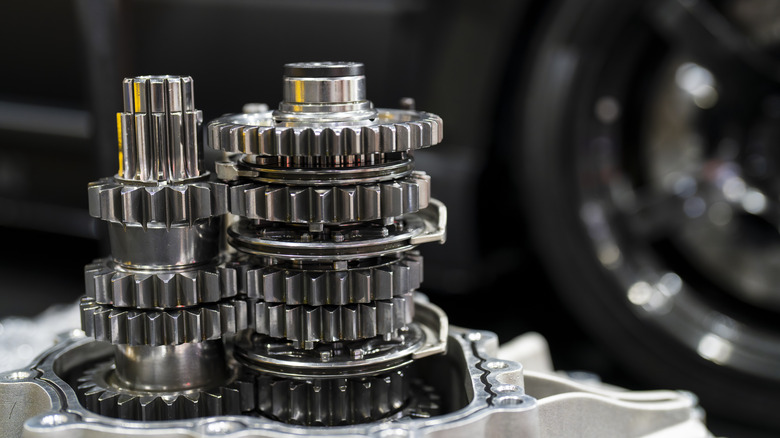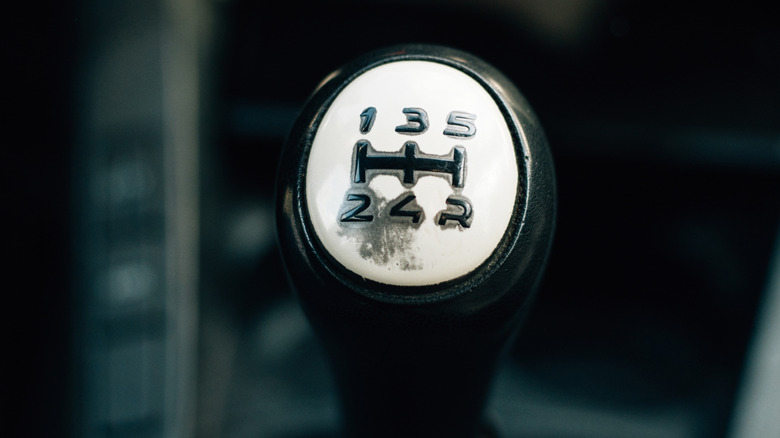What Is Double Clutching? (And Is It Different From Granny Shifting?)
One of the major selling points of the manual transmission is its level of interactivity. Driving stick offers a level of interactivity that no automatic or DCT can truly compete with, often at the cost of being pragmatically slower. Computers are faster at shifting than human hands, after all. But for those of us with a penchant to feel a connection to their automobile, nothing beats a good manual, though like any vehicle, some are more finicky than others. For instance, some older manual cars and commercial trucks don't have synchronizers, some cars are just temperamental, or sometimes you just want to try something new while going from light to light. Well, then you may opt for double clutching.
What is double clutching, though? Also called double de-clutching, it's a technique in which a driver engages the transmission in neutral before shifting into the desired gear, typically to avoid the sudden jerk forward under deceleration. This reaction occurs because the engine speed is different from the transmission speed, meaning there's a brief period when the transmission and clutch aren't synced. When the transmission is in neutral, the driver then blips the throttle to bring up the RPM so it cleanly meshes with the transmission when put back into gear.
This technique is called double clutching because it requires the clutch to be pressed twice — once to shift to neutral, then again to shift into the desired gear. Effectively, you're shifting twice for the price of one gear change. It's not like granny-shifting, which is the typical beginner method of learning stick and generally the "correct" way to shift a synchronized manual car — press the clutch, shift, release the clutch. So what's the point of double clutching in modern cars, anyway?
How double clutching actually works
The most obvious use for double clutching comes with vehicles with unsynchronized transmissions. Synchronizers are essentially the middlemen between the output shaft and the countershaft. Their function is in the name; they synchronize the speeds between each shaft, meaning you won't damage your transmission should the engine's RPM suddenly change, such as when downshifting. Why, then, is this important to double clutching? Well, without any synchronizers, the transmission has no means to get these shafts to rotate at the same speed, apart from manual input. This means shifting into neutral and speeding up the input RPM by throttling the engine up, then pressing the clutch in again and changing into your selected gear. The reverse is true for upshifting; just release the throttle to slow the engine's RPM instead of blipping it to increase RPM.
In layman's terms, think of two shafts rotating together at the same speed. When you downshift a car, what you're doing is making the engine's shaft spin faster and the transmission's spin slower. To accomplish this, as the car slows, you shift into neutral, therefore disengaging one shaft from another. You release the clutch, matching the engine and transmission speed, but not actually sending power to the wheels. You then rev up the engine, which spins up the transmission as well. This means that, when you shift into gear, the transmission speed and output shaft's gear speed will match. This directly opposes granny-shifting, which relies on the vehicle having good synchronizers to function properly. But if the synchronizer is damaged or worn, or it's a particularly old car without any such devices, then that's when double clutching comes into play.
Why it's an obsolete but sometimes still useful technique to know
There are specific circumstances in which double clutching remains a useful skill to have, as previously mentioned: namely, if something breaks inside your transmission or it's heavily worn and won't slip into gear easily. Sometimes that kick forward when downshifting leads to unpredictable weight transfer, which is less ideal in motorsports because it unsettles the car under heavy braking. Trail braking is when you're turning as you gradually release the brake pedal and ease into the corner; it requires precision and stability to execute at racing speeds. Imagine getting a sudden, unexpected kick from the rear end of the car during such a maneuver.
More often than not, though, most people won't find themselves executing advanced driving techniques such as trail braking in everyday traffic. So what's the point of double clutching in modern cars? In truth, apart from perhaps the passenger's comfort during upshifts and downshifts — not much. All a double clutch does is synchronize the transmission and output shaft speed, but that's the point of a synchronizer. So in most modern cars equipped with manual transmissions, you'll find no practical use for double clutching that rev matching won't accomplish, and that technique doesn't require more than one clutch press.
That said, while it's an obsolete practice, it still has its place. If normal granny-shifting results in the transmission groaning in protest, then double clutching may be your only option for getting home. Moreover, it's an essential skill for truckers, since many commercial rigs and other specialized vehicles feature unsynchronized transmissions.


